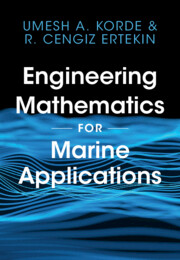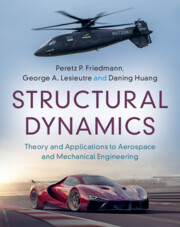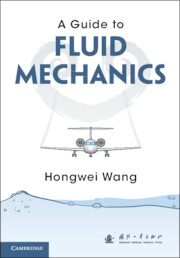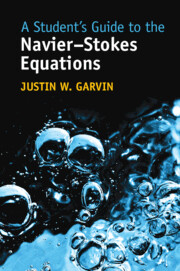Refine search
Actions for selected content:
5487 results in Thermal-fluids engineering
2 - Vector Calculus-II
-
- Book:
- Engineering Mathematics for Marine Applications
- Published online:
- 11 May 2023
- Print publication:
- 25 May 2023, pp 19-35
-
- Chapter
- Export citation

Engineering Mathematics for Marine Applications
-
- Published online:
- 11 May 2023
- Print publication:
- 25 May 2023

Structural Dynamics
- Theory and Applications to Aerospace and Mechanical Engineering
-
- Published online:
- 31 March 2023
- Print publication:
- 23 February 2023
-
- Textbook
- Export citation
7 - Fundamentals of Compressible Flow
-
- Book:
- A Guide to Fluid Mechanics
- Published online:
- 16 March 2023
- Print publication:
- 23 March 2023, pp 191-229
-
- Chapter
- Export citation
1 - Fluids and Fluid Mechanics
-
- Book:
- A Guide to Fluid Mechanics
- Published online:
- 16 March 2023
- Print publication:
- 23 March 2023, pp 1-19
-
- Chapter
- Export citation
4 - Basic Equations of Fluid Dynamics
-
- Book:
- A Guide to Fluid Mechanics
- Published online:
- 16 March 2023
- Print publication:
- 23 March 2023, pp 57-107
-
- Chapter
- Export citation
Copyright page
-
- Book:
- A Guide to Fluid Mechanics
- Published online:
- 16 March 2023
- Print publication:
- 23 March 2023, pp iv-iv
-
- Chapter
- Export citation
3 - Description of Fluid Motion
-
- Book:
- A Guide to Fluid Mechanics
- Published online:
- 16 March 2023
- Print publication:
- 23 March 2023, pp 34-56
-
- Chapter
- Export citation
9 - Analysis of Some Flow Phenomena
-
- Book:
- A Guide to Fluid Mechanics
- Published online:
- 16 March 2023
- Print publication:
- 23 March 2023, pp 246-302
-
- Chapter
- Export citation
Foreword
-
- Book:
- A Guide to Fluid Mechanics
- Published online:
- 16 March 2023
- Print publication:
- 23 March 2023, pp xi-xiii
-
- Chapter
- Export citation
Contents
-
- Book:
- A Guide to Fluid Mechanics
- Published online:
- 16 March 2023
- Print publication:
- 23 March 2023, pp v-x
-
- Chapter
- Export citation
Bibliography
-
- Book:
- A Guide to Fluid Mechanics
- Published online:
- 16 March 2023
- Print publication:
- 23 March 2023, pp 303-305
-
- Chapter
- Export citation
2 - Forces in a Static Fluid
-
- Book:
- A Guide to Fluid Mechanics
- Published online:
- 16 March 2023
- Print publication:
- 23 March 2023, pp 20-33
-
- Chapter
- Export citation
8 - Similarity and Dimensional Analysis
-
- Book:
- A Guide to Fluid Mechanics
- Published online:
- 16 March 2023
- Print publication:
- 23 March 2023, pp 230-245
-
- Chapter
- Export citation
6 - Viscous Shear Flow
-
- Book:
- A Guide to Fluid Mechanics
- Published online:
- 16 March 2023
- Print publication:
- 23 March 2023, pp 128-190
-
- Chapter
- Export citation
5 - Inviscid Flow and Potential Flow Method
-
- Book:
- A Guide to Fluid Mechanics
- Published online:
- 16 March 2023
- Print publication:
- 23 March 2023, pp 108-127
-
- Chapter
- Export citation
Nomenclature
-
- Book:
- A Guide to Fluid Mechanics
- Published online:
- 16 March 2023
- Print publication:
- 23 March 2023, pp xiv-xviii
-
- Chapter
- Export citation

A Guide to Fluid Mechanics
-
- Published online:
- 16 March 2023
- Print publication:
- 23 March 2023

A Student's Guide to the Navier-Stokes Equations
-
- Published online:
- 10 March 2023
- Print publication:
- 09 February 2023
-
- Textbook
- Export citation
Part I - Basics and Design for Compressive Ice Interactions
-
- Book:
- Mechanics of Ice Failure
- Published online:
- 10 February 2023
- Print publication:
- 02 March 2023, pp 1-2
-
- Chapter
- Export citation
